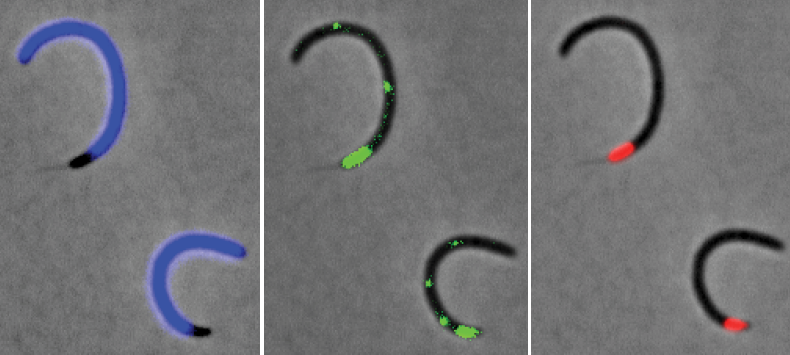

















Every living thing has a body plan in which distinct anatomical parts are used for
different purposes. This is true down to the fundamental unit of life - the cellular
level. Even bacteria, the simplest and earliest known forms of cellular life, have
defined body plans.
Amazingly, bacteria can generate complex body plans within a single contiguous
cytoplasm, without using internal membranes to provide compartmentalization or
directed vesicular transport as eukaryotic cells do. Instead, bacteria can become
organized through the assembly of complex macromolecular structures, which act
as microdomains for the purpose of carrying out specialized functions.
We seek to understand the organizational principles of a microdomains in the
bacterium Caulobacter crescentus, which houses the control mechanisms for the
establishment of cell polarity and the timing of chromosome replication in large
macromolecular complexes at the cell poles. Using powerful genetic, biochemical,
and visual tools afforded by bacterial systems, my laboratory will gain an atomic
scale understanding of these microenvironments, and understand how their
structure relates to biochemical mechanism. How is this dynamic arrangement of
scaffolding proteins, signaling factors, and other molecules combined to form a
functional macromolecular complex?
Macromolecular Structures At Cell Poles
Luis Comolli, LBNL

















